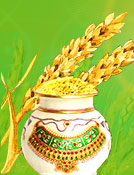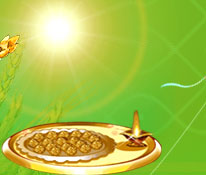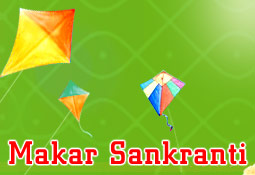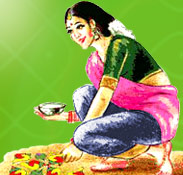Happy Lohri

What is the significance of this festival
The astronomical significance of the festival is that it marks the beginning of Uttarayana, the sun’s movement northward for a six-month period. Makara Sankranthi refers to the event of the sun entering the zodiac sign of Makara (Capricorn). While Pongal is predominantly a Tamil festival, similar festivals are also celebrated in several other Indian States under different names. In Andhra Pradesh, Kerala, and Karnataka, the harvest festival Sankranthi is celebrated. In northern India, it is called Makara Sankranti. In Maharashtra and Gujarat, it is celebrated on the date of the annual kite flying day, Uttarayan. It also coincides with the bonfire and harvest festival in Punjab and Haryana, known as Lohri. Similar harvest festivals in the same time frame are also celebrated by farmers in in Burma, Cambodia, and Korea.
Lohri Song for Boys

Sunder mundriye ho!
Tera kaun vicaharaa ho!
Dullah bhatti walla ho!
Dullhe di dhee vyayae ho!
Ser shakkar payee ho!
Kudi da laal pathaka ho!
Kudi da saalu paatta ho!
Salu kaun samete!
Chache choori
kutti! zamidara lutti!
Zamindaar sudhaye!
bade bhole aaye!
Ek bhola reh gaya!
Sipahee pakad ke lai gaya!
Sipahee ne mari eet!
Sanoo de de lohri
te teri jeeve jodi! (Cry or howl!)
Paheenve ro te phannve pit! "
Translation
"The ‘ho’s are in chorus Who do you have
The groom with the tandoor
The groom's daughter got married
He gave 1 kg sugar!
The girl is wearing a red suit!
But her shawl is torn!
Who will stitch her shawl?!
The uncle made choori!
The landlords ate it!
He made the landlords eat a lot!
Lots of innocent guys came
One innocent boy got left behind
The police arrested him!
The policeman hit him with a
brick!Cry or howl!
Give us lohri ..long live your jodi!"
Dullah bhatti walla ho!
Dullhe di dhee vyayae ho!
Ser shakkar payee ho!
Kudi da laal pathaka ho!
Kudi da saalu paatta ho!
Salu kaun samete!
Chache choori
kutti! zamidara lutti!
Zamindaar sudhaye!
bade bhole aaye!
Ek bhola reh gaya!
Sipahee pakad ke lai gaya!
Sipahee ne mari eet!
Sanoo de de lohri
te teri jeeve jodi! (Cry or howl!)
Paheenve ro te phannve pit! "
Translation
"The ‘ho’s are in chorus Who do you have
The groom with the tandoor
The groom's daughter got married
He gave 1 kg sugar!
The girl is wearing a red suit!
But her shawl is torn!
Who will stitch her shawl?!
The uncle made choori!
The landlords ate it!
He made the landlords eat a lot!
Lots of innocent guys came
One innocent boy got left behind
The police arrested him!
The policeman hit him with a
brick!Cry or howl!
Give us lohri ..long live your jodi!"
Lohri Song for Girls

"Hulle
nee maiyee hulle
do beri patte jhulle
do jhul payeaan kahjurran
khajurran suttya meva
es munde de ghar mangeva
es munde di
voti nikdi
oh! khandi choori, kutdi
Kut! Kut! Bharaya thaal woti bave
nananaa nal
Ninaan te wadi parjaee
So kudma de ghar aayee!
mein lohri lain aayee!"
nee maiyee hulle
do beri patte jhulle
do jhul payeaan kahjurran
khajurran suttya meva
es munde de ghar mangeva
es munde di
voti nikdi
oh! khandi choori, kutdi
Kut! Kut! Bharaya thaal woti bave
nananaa nal
Ninaan te wadi parjaee
So kudma de ghar aayee!
mein lohri lain aayee!"
Translation
"Two berry leaves are hanging
Two date leaves are also hanging
The tree shed the fruit
There's an engagement in this boy's house
This boy's wife is short
She eats and grinds choori(a punjabi dish)
She grinds and grinds and
fills the plate?.the wife sits with her sisters in law
Sister in law and the elder son's wife
Are in their in-laws house
"Two berry leaves are hanging
Two date leaves are also hanging
The tree shed the fruit
There's an engagement in this boy's house
This boy's wife is short
She eats and grinds choori(a punjabi dish)
She grinds and grinds and
fills the plate?.the wife sits with her sisters in law
Sister in law and the elder son's wife
Are in their in-laws house
Happy Lohri to all
SMILE WITH
RAMNATH
















![[makar-sankranti-surya.jpg]](https://blogger.googleusercontent.com/img/b/R29vZ2xl/AVvXsEiCLOuklsxqJNxA_nsMsXm34UIl5nETwYxhJemP9Sk344FOl7z4czvYKBgfLxm686kNjbJwCP9-Vldf2HNFtihbD3mVL5twUqIK9TtHaqWikrZXiqHWCbSgfcMHX65G3K1dJ0OHtGJVYvA/s1600/makar-sankranti-surya.jpg)


















































